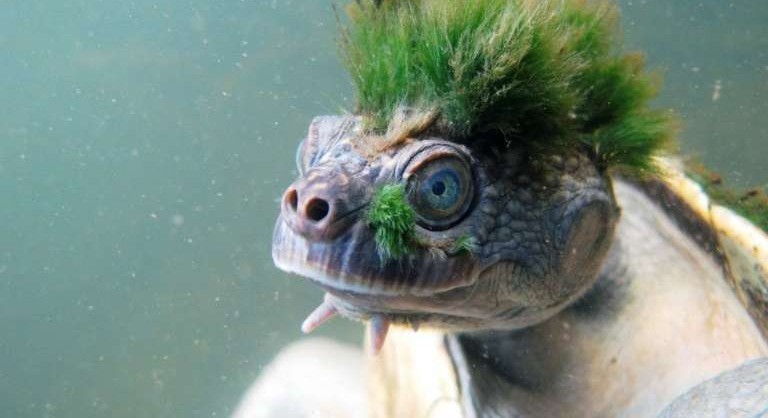Boasting a green, punk hairdo and the unusual ability to breathe through its backside, an Australian turtle has become famous overnight—but not only for its eccentricity.
Unfortunately, just as many of us are discovering the Mary River Turtle’s tantalising traits, it has become the latest creature to join the “EDGE of Existence” list of endangered species compiled by the Zoological Society of London (ZSL).
A native of Queensland, Australia, the turtle was one of 100 reptiles added to the catalogue this week.
It lives only in the Mary River from which it took its name.
The inventory has no shortage of weird and wonderful creatures—a limbless lizard, the world’s largest sea turtle, a blind snake, and a chameleon named after Tarzan.
But the Mary River Turtle might just be the strangest of them all.
“The turtle is highly distinctive,” states a ZSL description of the species known to scientists as Elusor macrurus.
It can breathe underwater through specialised glands in butt organs known as cloaca—orifices through which the turtle excretes urine and waste, and lays eggs.
Moody’s raises Greece’s rating as reforms bring progress
Mysterious radio signal is coming from inside our galaxy, scientists announce
“This turtle is able to spend so much time underwater—up to three days—without coming up for air due to its strange ability to breathe through its bum,” Rikki Gumbs of the Imperial College London, who helped compile the EDGE reptile list, told AFP.
“They have specialized organs in their cloaca which process oxygen from the surrounding water”.
But perhaps the computer screen-sized turtle’s most distinguishing feature is the bright green, spiky mohawks sprouting on the heads of some.
This is not hair, but algae.
“The Mary River Turtle spends so much time submerged underwater that some individuals become covered in algae—and can end up with some pretty impressive bright green hairstyles!” said Gumbs.
Read more: phys.org


































